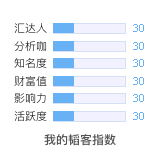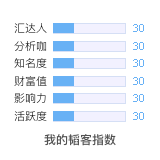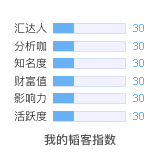印度央行7月30日再度加息50基点到9%
India Central Bank Raises Interest Rate to Fight InflationCash Reserve Ratio Is Also Increased; Stock Market Falls
By JACKIE RANGE
July 30, 2008; Page A8
NEW DELHI -- India's central bank raised a key interest rate and lifted the amount of money banks must keep in reserve, hoping to fight inflation even at the cost of slower economic growth. Economists said the moves were more drastic than expected. "We can expect to see some further damage to the real economy coming through," wrote HSBC economist Robert Prior-Wandesforde. The rate increase, coupled with a reduction in the bank's forecast for economic growth, prompted a selloff in the stock market. The Bombay Stock Exchange's 30-stock Sensitive Index, or Sensex, fell 557.57 points, or 3.9%, to end at 13791.54. The Reserve Bank of India raised the repurchase rate -- the rate at which banks borrow funds from it -- by 0.50 percentage point to 9%, the highest level in more than seven years. It was the third time in two months it has raised the repo rate. The bank also moved to drain liquidity from the financial system by increasing the amount of cash banks are required to hold at the central bank. It raised the cash reserve ratio by 0.25 percentage point to 9% of bank deposits, with effect from Aug. 30. Economists predict that India's gross domestic product will grow between 7% and 7.5% in the year ending March 31, 2009, compared with 9% in the previous year and 9.6% the year before that. Inflation and high interest rates are major factors in slowing growth, economists say. The Reserve Bank lowered its own economic growth forecast to about 8% for the year ending March 31, from its previous estimate of 8% to 8.5%. It also lifted its inflation forecast to around 7% by the end of the fiscal year, from 5.5% earlier. Recently, wholesale price inflation, which measures the rise in wholesale prices and is the most closely watched inflation gauge in India, rose at an annual rate of just under 12%, a 13-year high. HSBC pred。。 wholesale price inflation could reach around 15% in October. The central bank's moves are "a signal to the banks that credit growth must be moderated," the finance ministry said in a statement. Indian banks are expected to pass the interest-rate rises along to customers through higher lending rates. Economists expect further monetary tightening by the central bank later this year, with inflation likely staying high in 2008.
NEW DELHI -- India's central bank raised a key interest rate and lifted the amount of money banks must keep in reserve, hoping to fight inflation even at the cost of slower economic growth. Economists said the moves were more drastic than expected. "We can expect to see some further damage to the real economy coming through," wrote HSBC economist Robert Prior-Wandesforde. The rate increase, coupled with a reduction in the bank's forecast for economic growth, prompted a selloff in the stock market. The Bombay Stock Exchange's 30-stock Sensitive Index, or Sensex, fell 557.57 points, or 3.9%, to end at 13791.54. The Reserve Bank of India raised the repurchase rate -- the rate at which banks borrow funds from it -- by 0.50 percentage point to 9%, the highest level in more than seven years. It was the third time in two months it has raised the repo rate. The bank also moved to drain liquidity from the financial system by increasing the amount of cash banks are required to hold at the central bank. It raised the cash reserve ratio by 0.25 percentage point to 9% of bank deposits, with effect from Aug. 30. Economists predict that India's gross domestic product will grow between 7% and 7.5% in the year ending March 31, 2009, compared with 9% in the previous year and 9.6% the year before that. Inflation and high interest rates are major factors in slowing growth, economists say. The Reserve Bank lowered its own economic growth forecast to about 8% for the year ending March 31, from its previous estimate of 8% to 8.5%. It also lifted its inflation forecast to around 7% by the end of the fiscal year, from 5.5% earlier. Recently, wholesale price inflation, which measures the rise in wholesale prices and is the most closely watched inflation gauge in India, rose at an annual rate of just under 12%, a 13-year high. HSBC pred。。 wholesale price inflation could reach around 15% in October. The central bank's moves are "a signal to the banks that credit growth must be moderated," the finance ministry said in a statement. Indian banks are expected to pass the interest-rate rises along to customers through higher lending rates. Economists expect further monetary tightening by the central bank later this year, with inflation likely staying high in 2008.
发表于:2008-07-31 05:17只看该作者
2楼
别急,运动会后中国也会加的:)
韬客社区www.talkfx.co
发表于:2008-07-31 15:39只看该作者
4楼

















